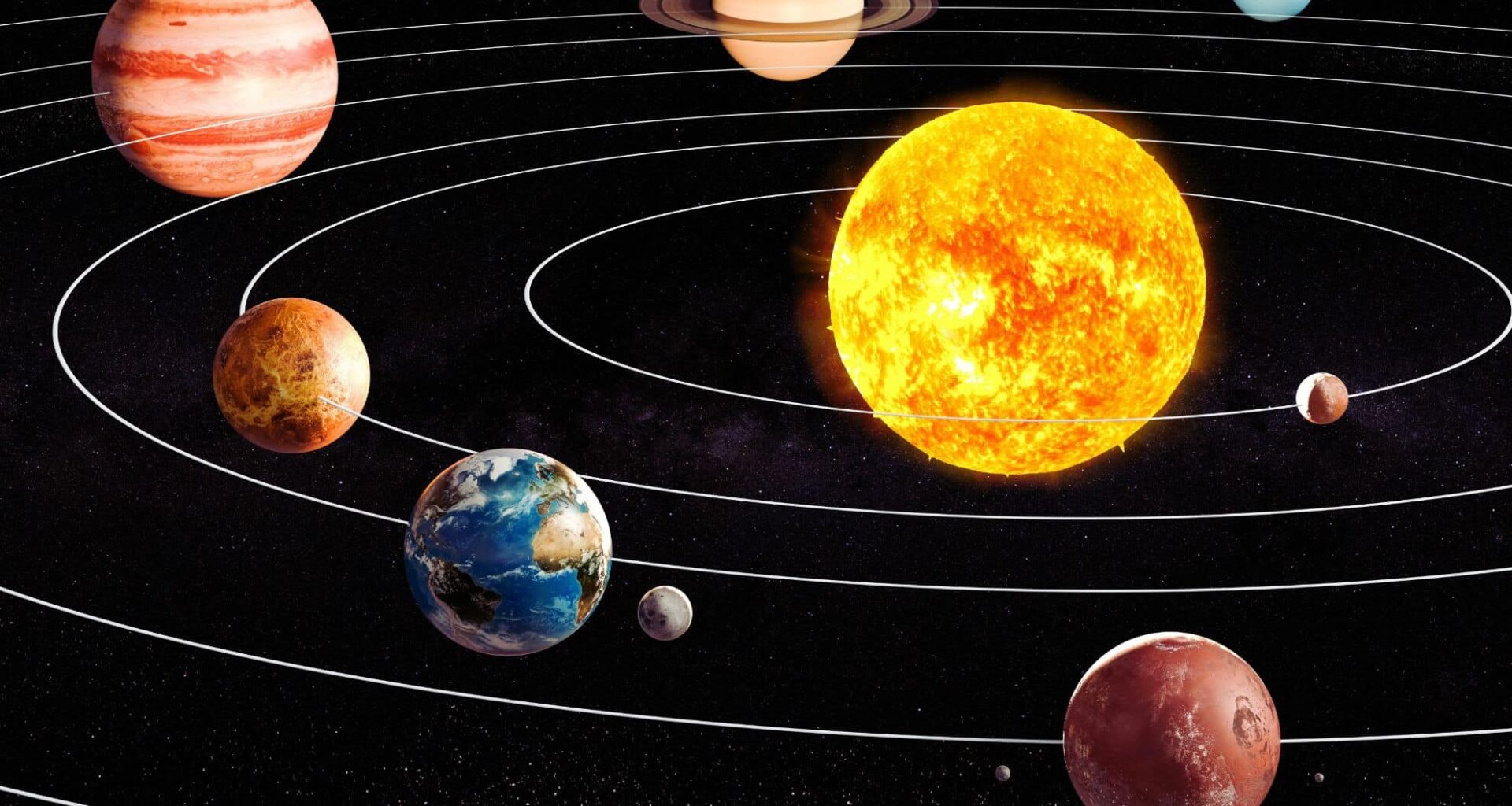Recent simulations and research have unveiled a fascinating new insight into the history of the solar system’s terrestrial planets. For years, scientists speculated about how the rocky planets—Earth, Mars, Venus, and the mysterious long-lost world, Theia—formed and evolved in relation to one another. However, a recent study published in The Astrophysical Journal has provided new findings suggesting that these planets, in their early years, could have followed a perfect, mathematically-driven rhythm while orbiting the Sun.
This study, led by Chris Ormel, Associate Professor at Tsinghua University in China, and Shuo Huang, a doctoral student, has uncovered compelling evidence that suggests the four terrestrial planets may have once been in resonance. Their orbits would have been in a synchronized, whole-number ratio, providing a level of harmony akin to a cosmic “waltz” around the Sun. These new insights not only challenge the previous theories about planetary formation but also suggest that the inner planets may have formed earlier than previously estimated. According to the study, the solar system’s inner planets may have begun their cosmic dance much earlier than models predicted—up to 20 million years earlier, in fact.
The Resonance Hypothesis: A New Dawn for Planetary Formation Theory
In traditional planetary formation models, the general consensus was that the inner planets of our solar system, including Earth, Venus, and Mars, were formed through a series of colossal impacts between rocky bodies. This “giant impacts” theory has been the dominant explanation for their current orbital configurations. However, the idea that planets could form through gravitationally synchronized, rhythmic orbits—resonance—has never been fully explored, until now.
“Until now, though, nobody had examined whether the terrestrial planets have ever been in resonance,” Chris Ormel, co-author of the study, explained in an E-mail to Live Science. “This was because an alternative theory—that the planets formed by a series of giant impacts—was thought to be adequate to explain how they currently behave.” The idea of planetary resonance had been previously applied to some exoplanetary systems, such as the TRAPPIST-1 system, where multiple planets orbit in a synchronized rhythm, but never before had it been investigated in our own solar system.
Ormel and his team sought to address this gap in the understanding of planetary dynamics, proposing that the rocky planets may have initially formed in a resonance configuration. This study emphasizes that the early solar system was a dynamic and evolving system where planets moved in lockstep with one another, exhibiting orbital patterns that were remarkably regular and rhythmic.
Computer Simulations and the Birth of the Resonance Chain
To test their hypothesis, the researchers created complex computer models simulating the conditions of the early solar system. These models included the massive gas giants, Jupiter and Saturn, as well as the rocky inner planets—Earth, Venus, Mars, and Theia. By adjusting the positions and masses of these planets and including a gas-filled protoplanetary disk, the team explored how these worlds could have synchronized their orbits over time.
The simulations, which included over 13,000 iterations, showed that the inner planets could have once been part of a resonant orbital chain. In one of the most compelling findings, Venus, Earth, Theia, and Mars were positioned in a 2:3:4:6 orbital resonance, meaning that their orbital periods were locked in a whole-number ratio. This synchronization would have ensured that the planets were moving in harmony around the Sun, with their gravitational influences acting in concert rather than disrupting one another.
“To simulate the giant planet instability,” Shuo Huang, the study’s first author, added, “we adjusted the model to reflect the movements of the outer giant planets, particularly Saturn, which was originally placed closer to Jupiter.” The giant planet instability refers to a crucial event that took place around 4.4 billion years ago when the protoplanetary disk began to dissipate, causing the gas giants to shift their orbits and push the inner planets into more chaotic configurations. This event likely played a major role in disrupting the resonance of the inner planets.
The Discovery’s Implications for Planetary Formation and Evolution
This new study has important implications for the field of planetary science. First, it challenges the previous notion that planetary systems like our own formed solely through the chaotic accumulation of planetary building blocks via giant impacts. If the terrestrial planets did indeed form through resonance, it means they were more influenced by the gas and debris in the early solar system, which shaped their orbits in a more structured manner.
Furthermore, the study has important ramifications for our understanding of the age and formation of the inner planets. The results suggest that the rocky worlds may have formed much earlier than previously thought, possibly within the first 10 million years of the solar system’s existence. This would place their formation at least 20 million years before most current models suggest. As Venus, unlike Earth and Mars, has been relatively free of significant impacts since its formation, scientists believe that studying its mantle could provide direct evidence of its ancient origins, giving further weight to the revised formation timeline.
Understanding Planetary Instability and the TRAPPIST-1 System
The findings from this study also provide new insights into planetary instability, particularly the influence of giant outer planets on the dynamics of inner worlds. The research suggests that the movement of the gas giants, particularly during the giant planet instability, may have caused significant disruption in the resonance of the inner planets. This instability likely explains why other planetary systems—like the TRAPPIST-1 system—can have planets in resonance without large outer planets present. The absence of giant outer planets in systems like TRAPPIST-1 may be a result of these planets’ inability to maintain resonance in the presence of such instabilities.
By studying planetary systems both in and out of resonance, scientists can refine their models of planetary formation and better understand the factors that lead to the stability or disruption of these systems over time.
